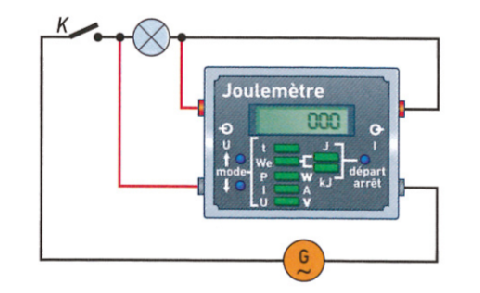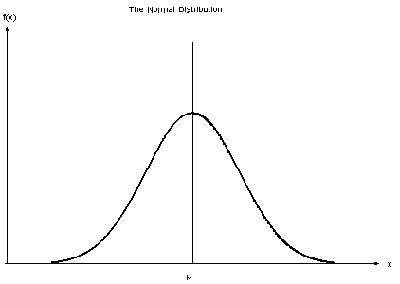Contents:


Take note of the company’s balance sheet on page 53 of the report and the income statement on page 54. These reports have much more information than the financial statements we have shown you; however, if you read through them you may notice some familiar items. Another key element to understanding the general ledger, and the third step in the accounting cycle, is how to calculate balances in ledger accounts. Notice that for this entry, the rules for recording journal entries have been followed. A ledger is a book in which all purchases and sales for the company are recorded. Also includes any other accounts that might be included in this book such as bank statements or transactions with employees.

When a company receives payment from a client for the sale of a product, the cash received is tabulated in net sales along with the receipts from other sales and returns. The cost of sales is subtracted from that sum to yield the gross profit for that reporting period. All accounts arising from business transactions are maintained in a ledger. At the time of the posting process too much time is wasted to find out which account is on which page. The posting of opening entries is according to the balance of their accounts. But where more than two accounts are involved in one single transaction and there is only one journal entry made, it is said to be a compound entry.
Cash is an asset that decreases on the credit side. Accounts Payable recognized the liability the company had to the supplier to pay for the equipment. Since the company is now paying off the debt it owes, this will decrease Accounts Payable. Liabilities decrease on the debit side; therefore, Accounts Payable will decrease on the debit side by $3,500.
The general ledger contains all entries from both the General Journal and the Special Journals. As a result, posting accounting definition gives a clear picture of the progress or downfall in the specific ledger and decisions can be made respectively. Posting balances are exercised to track the records and can be easily called for.
Now, in this article, we will discuss the meaning of ledgers and the process to put entries in the ledgers. The procedure of transferring an entry from a journal to a ledger account is known as posting. From the perspective of closing the books, posting is one of the key procedural steps required before financial statements can be created. In this process, all adjusting entries to the various subledgers and general journal must be made, after which their contents are posted to the general ledger. Access to the subledgers and journals is then opened for the next accounting period. General ledger is a book used to record business transactions in a summarized form.
Make sure you have proper accounts in the general ledger for your journal entries. Maybe you can create new accounts, or double check your entries for errors. Postin accounting definition gives an updated status of all the ledger balances. Moreover, it aids in tracking the balances on the records of how it has changed over some time. The three golden rules of accounting must be kept in mind i.e liabilities are credited while assets need to be debited. The accounting cycle is a seven-step process followed for the completion of the accountancy task usually by double-entry bookkeeping method.
The present value formula is segregated on basis of type, into accounts for liabilities, assets, revenue, expenses and owner’s equity. The format has two sides namely debit and credit with the date of transaction, account by which it is debited or credit, the JF note and respective amounts. Posting is always from the journal to the ledger accounts. Postings can be made at the time the transaction is journalized; at the end of the day, week, or month; or as each journal page is filled. Posting in the ledger is a manual process; hence workforce is needed. It ensures that all assets and liabilities are to be recorded properly.
https://1investing.in/ Revenue is a revenue account affecting equity. Revenue accounts increase on the credit side; thus, Service Revenue will show an increase of $5,500 on the credit side. Is when there is more than one account listed under the debit and/or credit column of a journal entry . In this instance, one asset account is increased by $200, while another asset account is reduced by $200. The net result is that both the increase and the decrease only affect one side of the accounting equation.
A Beginner’s Guide to Double-Entry Accounting.
Posted: Wed, 18 May 2022 07:00:00 GMT [source]
The vendor’s account balance is reduced by the invoice’s amount, and the invoice’s cost amounts are removed from jobs and tasks. You paid “on account.” Remember that “on account” means a service was performed or an item was received without being paid for. You made a purchase of gas on account earlier in the month, and at that time you increased accounts payable to show you had a liability to pay this amount sometime in the future.
This sounds like a lot of work, but it’s necessary to keep an accurate record of business events. You can think of this like categorizing events into specific and broader relevant groupings. For example, journals are transferred to subsidiary ledgers then transferred to thegeneral ledger. The general ledger is the ledger in which balances of all sub-ledgers and general journals are to be transferred. In the first transaction, on December first, the owner invests $30,000 to start a company called FastForward.

Since this figure is on the credit side, this $300 is subtracted from the previous balance of $24,000 to get a new balance of $23,700. The same process occurs for the rest of the entries in the ledger and their balances. Common Stock had a credit of $20,000 in the journal entry, and that information is transferred to the general ledger account in the credit column. The balance at that time in the Common Stock ledger account is $20,000.
Analyze the transaction in terms of its effect on the accounts. When we introduced debits and credits, you learned about the usefulness of T-accounts as a graphic representation of any account in the general ledger. But before transactions are posted to the T-accounts, they are first recorded using special forms known as journals. This helps accountants, company management, analysts, investors, and other stakeholders assess the company’s performance on an ongoing basis. The balance sheet of the previous year is the basis of making opening en- tries of the subsequent year.
We begin the accounting process by analyzing source documents. For example, you usually receive a receipt when you pay cash for something. Think about the last time you went to a fast food restaurant. When you received your order, you were given a receipt, a source document.
From journal books, a process of recording as per the rules of accounting, either on the debit or credit side of an affected account is known as posting. Cross-indexing is the placing of the account number of the ledger account in the general journal and the general journal page number in the ledger account. A warranty expense is debited for the provision amount that will offset product sales revenue in the income statement and a credit is posted to warranty provision liability. The post-closing trial balance proves debits still equal credits after the closing entries have been made. Similarly, if an account in a journal entry has been credited it will be posted to the ledger account by entering the same amount on the credit side/column of the respective ledger account.
You can see that a journal has columns labeled debit and credit. The debit is on the left side, and the credit is on the right. Accruals are revenues earned or expenses incurred which impact a company’s net income, although cash has not yet exchanged hands. It gives information about the different accounts of a ledger for the preparation of final accounts of a business at the end of the year. Thus, the balance at which they end at in the previous accounting period is the balance that is carried forward to the next accounting period on the first day. This entering of balance in the next accounting period is called opening entry.
The balances of nominal accounts are directly transferred to the profit and loss account. The balances related to balance sheet items are to be transferred to the general ledger account. It helps keep the updated records, but with the advancement of technology and the availability of various software, the posting in balance has become the traditional concept. The balance column account format is similar to a T-account in having columns for debits and credits. It is different in including transaction date and explanation columns.

Following are the steps in the accounting cycle, arrange the steps in the proper sequence. In the journal entry, Cash has a debit of $2,800. This is posted to the Cash T-account on the debit side. You will notice that the transactions from January 3, January 9, January 12, and January 14 are listed already in this T-account. The next transaction figure of $2,800 is added directly below the January 9 record on the debit side. The new entry is recorded under the Jan 10 record, posted to the Service Revenue T-account on the credit side.
Sample Letter to Companies Regarding Recent Developments in ….
Posted: Thu, 08 Dec 2022 08:00:00 GMT [source]
And the $20,700 cash payments in the “Bank” T-account come directly from the total of the “Bank” column in thecash payments journal. The $35,500 cash receipts in the “Bank” T-account comes from the total of the “Bank” column in thecash receipts journal. Let’s see exactly how this transfer of information from the journals to the T-accounts is done. The header must contain the name of the company, the label of a Trial Balance, and the accounting period. This means you have an increase in the total amount of gas expense for April.
The cycle repeats itself every fiscal year as long as a company remains in business. Journal entries are passed in the book of account for the financial transaction of a business. Journal entries are classified into two parts, Simple journal entry & combined journal entry.
For example, the exchange with client P can be found in a general ledger containing names like Mr P. This Mr P account will show all the exchanges of Mr P. Optimising data is one of the important characteristics of a ledger. This mix-up tracking is used to rectify mistakes.
Write your comment